

Matt Campbell
2026 Hyundai Tucson Hybrid review
8 Hours Ago
Charger is an evocative name in muscle car folklore, and makes sense on an EV. But does this concept live up to the brand's stellar history?

Contributor
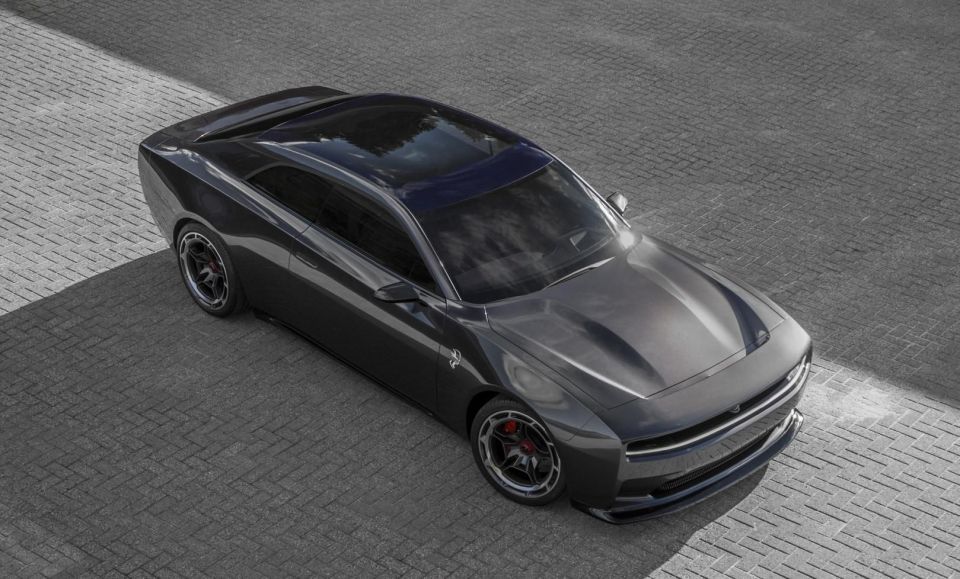

Contributor
Muscle cars are all about power and poise; and 1960s America offered the ideal combination of readily available cheap petrol, a carefree zeitgeist, and wide open stretches of road to allow these cars to thrive.
Dodge might not have been the first to join the muscle car party, but the brand’s Charger model was arguably one of the most attractive when production commenced in 1966.
Initially sharing certain design cues with another sibling, the Dodge Coronet, the Charger really came into its own with a more differentiated design when the second generation was introduced in 1968.
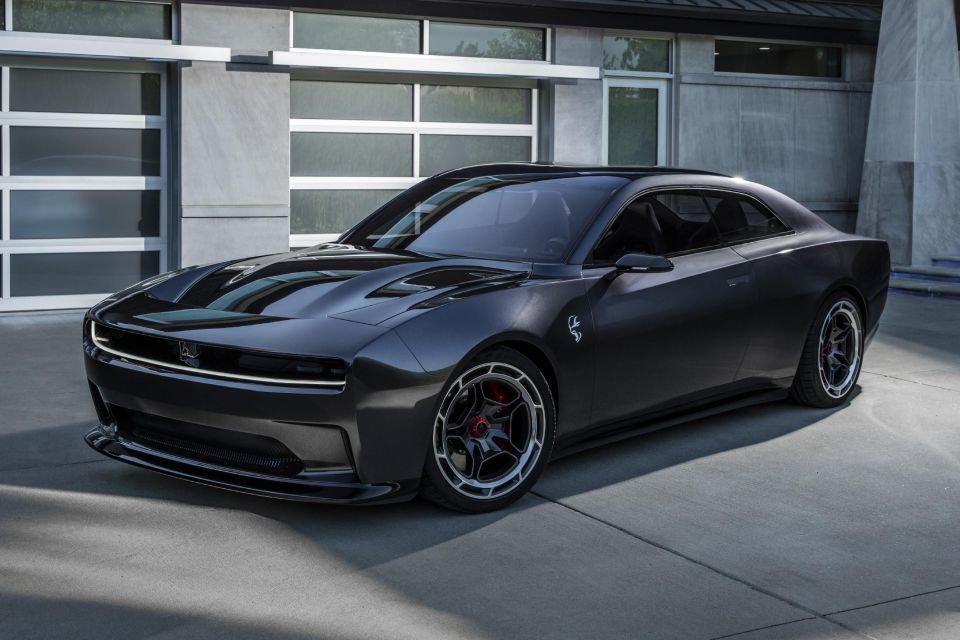
With a cleaner, more menacing look shaped by styling cues such as a broad C-pillar and the iconic end-to-end vertical slat grille featuring hidden headlamps, it is this model that forms the archetypal Charger in the minds of many.
More recently, the sixth- and seventh-generation Chargers morphed from a two-door fastback coupé to a more practical four-door sedan, based on the more conservatively styled Chrysler 300, with the Challenger taking over as a rival to Ford’s Mustang and the Chevrolet Camaro.
It might not be a surprise then, that in creating an electric performance car, Dodge has reused the very apt Charger name.
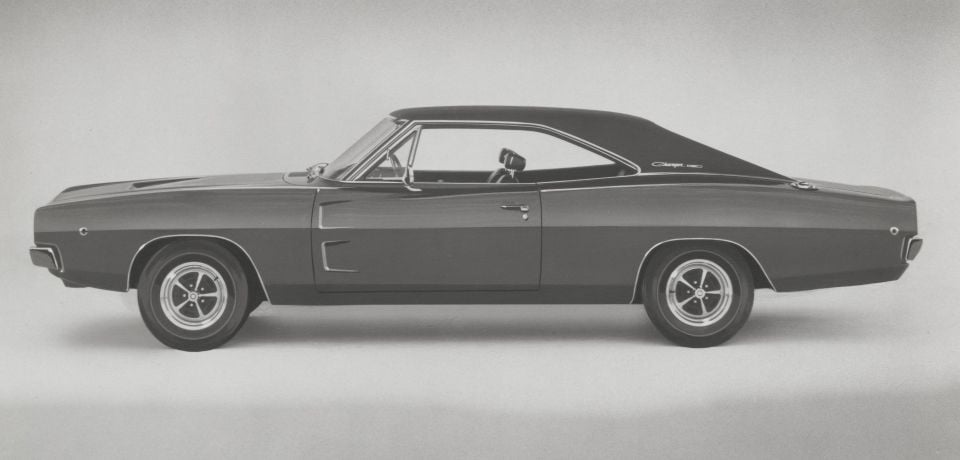
Perhaps a greater shock is that Dodge has taken the opportunity to thoroughly revitalise its Charger nameplate, drawing inspiration from the archetypal second-generation model and restyling it to echo that car’s fastback silhouette.
Currently called the Dodge Charger Daytona SRT Concept, a near-identical production version is expected to be revealed closer to the 2024 on-sale date.
The Dodge Charger Daytona SRT Concept, the brand says, “drives like a Dodge, looks like a Dodge and feels like a Dodge – and just so happens to be a battery-electric vehicle”.
Let’s have a look at what makes this model such a successful modern interpretation of its 1968 forbear.
Want to know more about this concept, including its soundtrack? Read here.
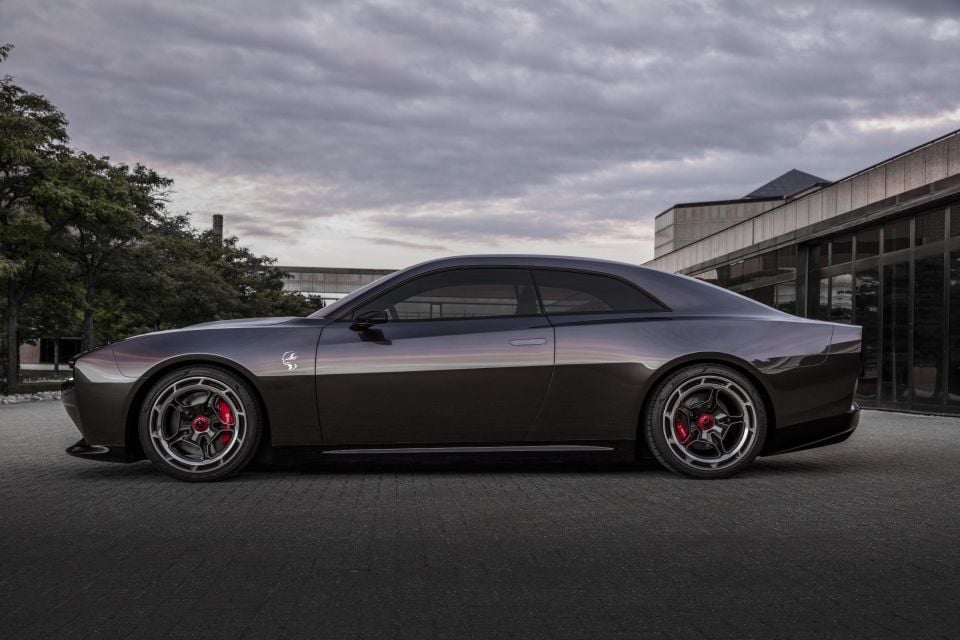
Electric vehicle design today is commonly underpinned by a desire to maximise aerodynamic efficiency, often leading to a bubble car or teardrop shape, with Mercedes’ ‘one-bow’ design as used in the new EQS and EQE perhaps the best example of this in the luxury EV space.
Dodge in contrast, has taken the opposite route, with three key features on the side profile demonstrating its commitment to stick closely to a classic muscle car shape and the timeless 1968 Charger design.
The first of these is a broad C pillar that frames the glasshouse and sweeps downwards into the tail. Much like its 1968 counterpart, this serves a key purpose in giving the car a confident stance that hints at the power within, whilst the steep rake also gives a sense of a car sitting on its haunches and ready to be propelled forwards.
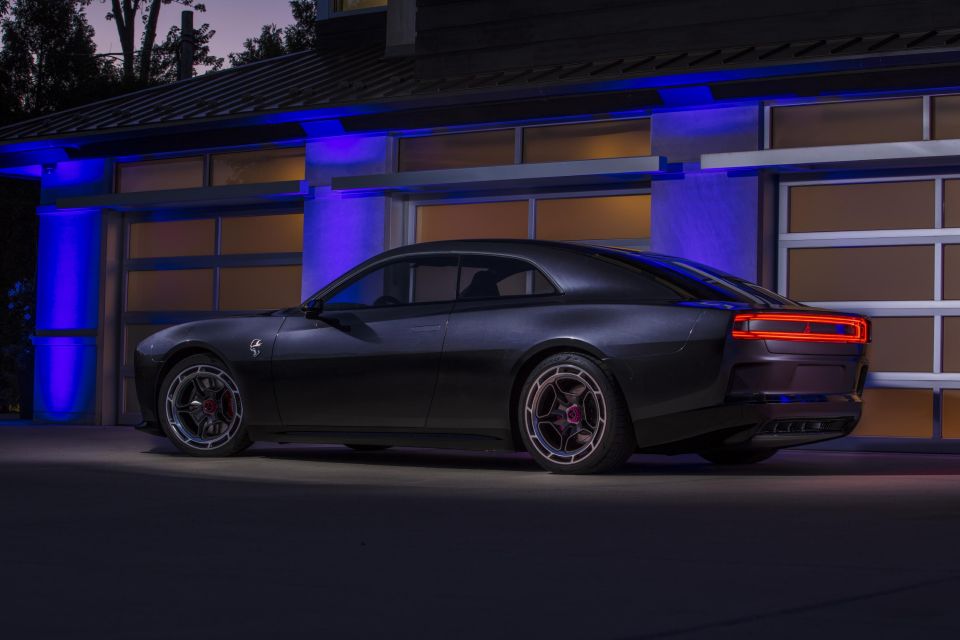
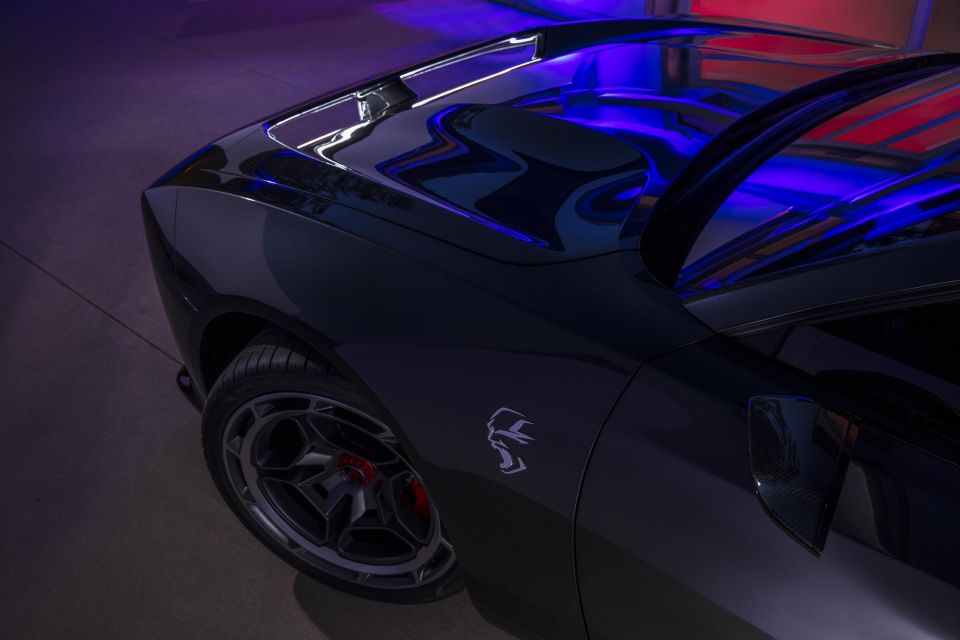
Two other lines define the Charger side profile and complete the look. The first of this is a strong shoulder line that starts right from the tail and gradually dips below the window and through the door to finish ahead of the wing mirror.
In turn, this is complimented by an upwards curve line above the front wheelarch, ending just into the leading edge of the front door.
Combined, these lines continue to provide a sense of forward motion, by acting as a subtle optical illusion that, like a wedge that gradually tapers to an end, visually lowers the front of the car.
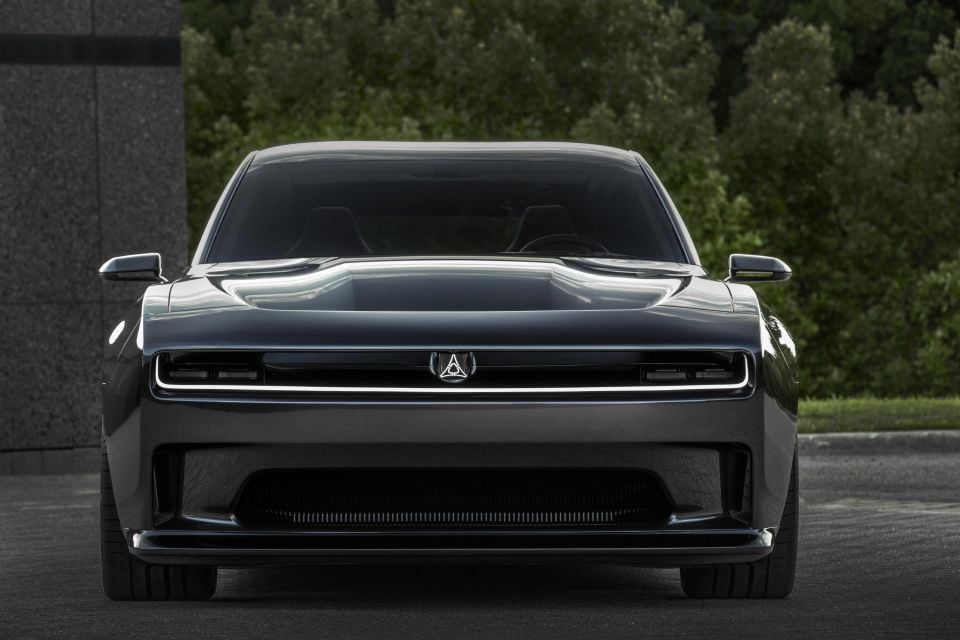
The 1968 Dodge Charger is well-known for its uniform, end-to-end ‘electric shaver’ style slatted front grille, complete with covers that slide upwards when the headlights need to be used. During the daytime when headlights may not be necessary, this creates an especially distinctive, menacing front end.
Whilst modern regulations and other considerations mean that this technology can no longer be used on road legal cars, Dodge has attempted to replicate the uniform look through LED technology.
This is evidenced through the use of a front LED light bar that stretches across the full width of the vehicle before curving upwards in a U shape to illuminate the sides of the upper front ‘grille.’
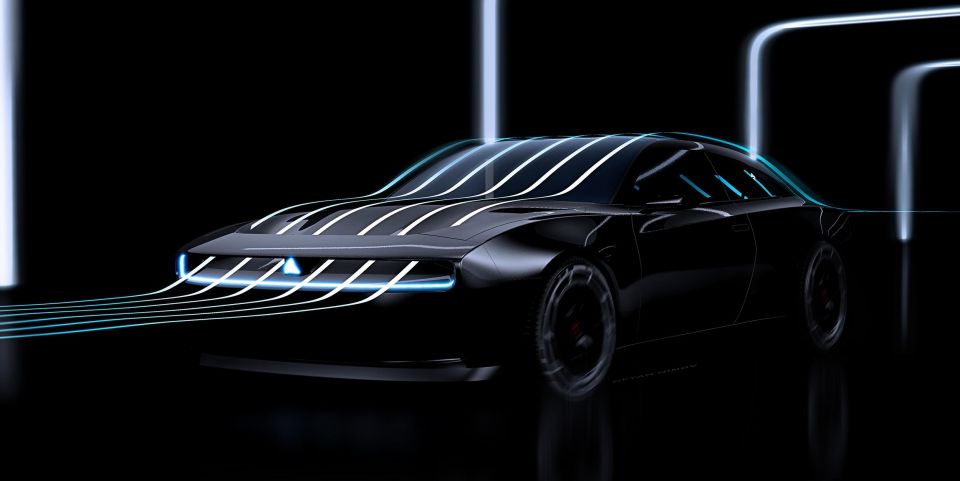
Electric cars don’t use an engine, of course, and the ability to have compact motors positioned much lower yields packaging benefits that also allow designers much more creativity with the shape and length of the bonnet.
This includes giving a vehicle a much more cab forward stance by having a short bonnet, or attempting to reduce the coefficient of drag and optimise aerodynamics (and therefore range) by having a bonnet curve downwards much more steeply.
Designers of the Charger Daytona concept opted for the latter approach, with an innovative new feature called the R-Wing. This effectively acts as an integrated front spoiler that lets air flow through easily through the front of the car, allowing the designers to give a sharp downwards curve to the rest of the front bonnet as well as a ‘power bulge.’
Dodge claims that the overall effect of this design is to increase downforce, thereby improving grip and handling and higher speeds, whilst also enabling a significant reduction in the coefficient of drag.
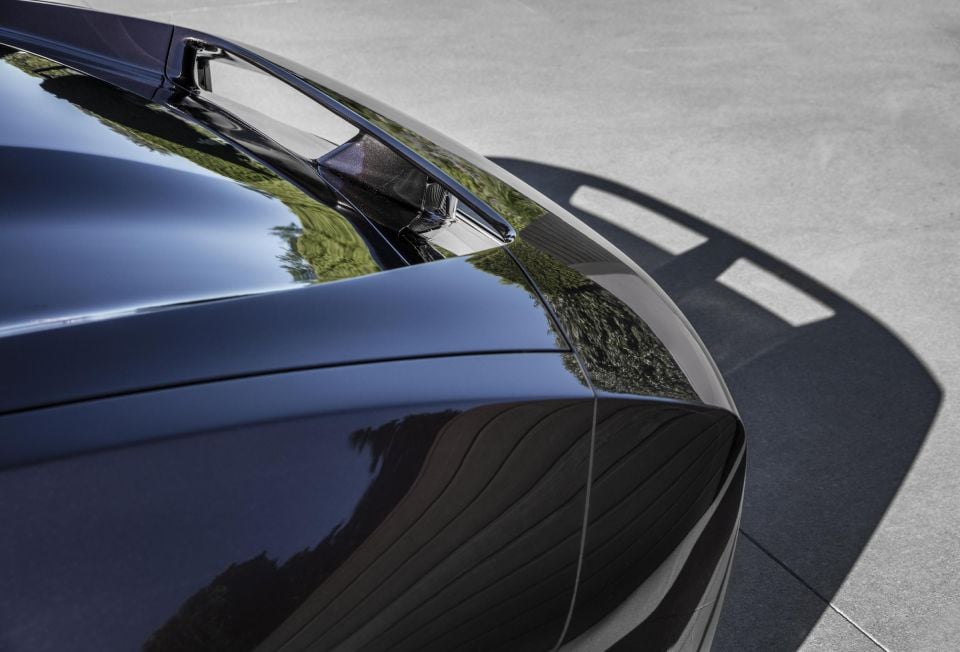
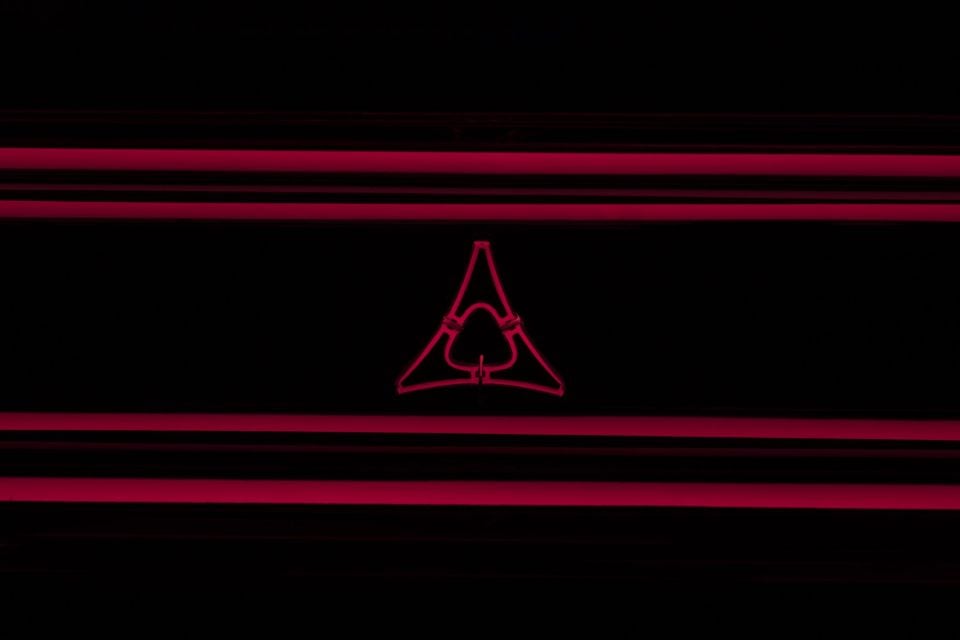
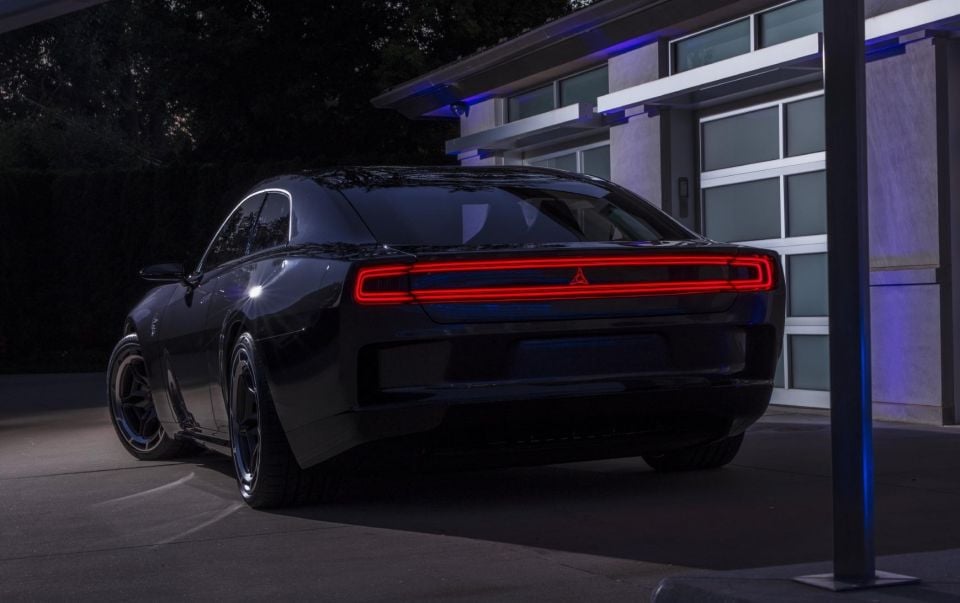
A recurring design trend for the rear end of vehicles today is the rear light bar. Now seen on everything from SUVs to passenger and sports cars, the light bar gives vehicles a futuristic look, and this is perhaps the area where the design of the Charger Daytona SRT concept deviates most significantly from its 1968 ancestor.
With a front light bar and ‘R-Wing’ already in place, Dodge’s take is more of a dual light surround than a bar, with two LED rings framing the retro inspired Fratzog logo and providing a sense of visual symmetry to the front, whilst also giving the overall design a greater sense of cohesion.
Just as interestingly, Dodge has attempted to improve practicality by making the tail a hatchback, improving access to cargo whilst also maximising luggage space.
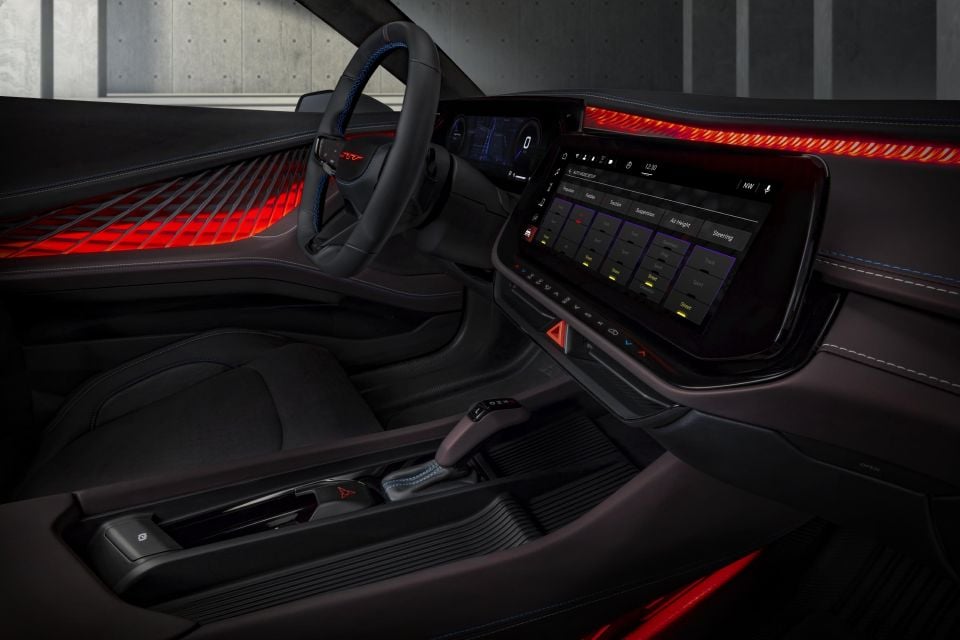


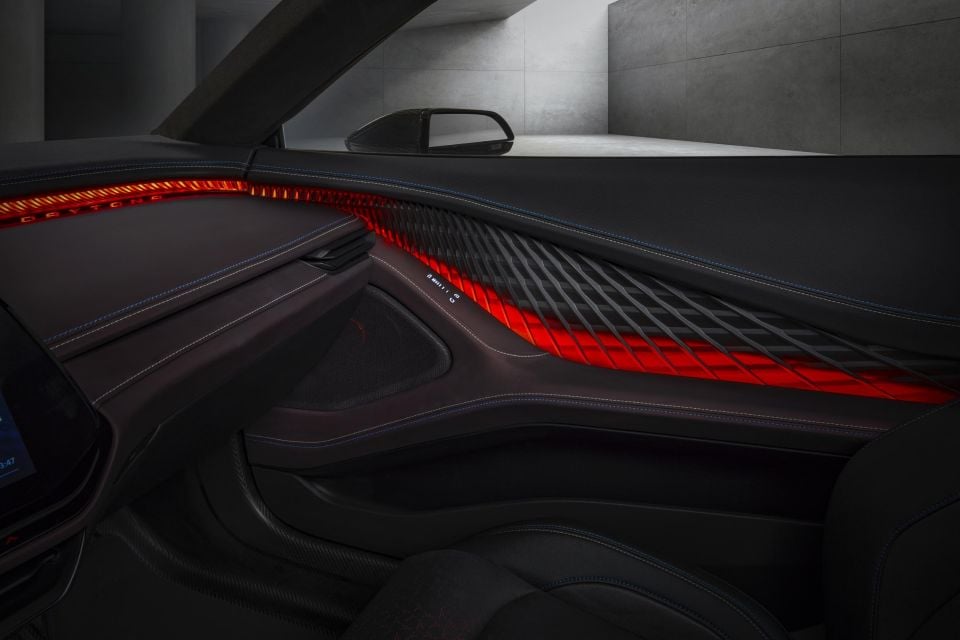
With a normal steering wheel, full centre console and a reasonably sized instrument cluster and infotainment display, the interior of the Charger Daytona appears close to production ready.
Perhaps the most impressive aspect of it is the expansive ambient lighting known in Dodge-speak as ‘Attitude Adjustment Lighting’, which is combined with what Dodge claims is a ‘parametric texture’ and ‘circuit-like graphics’ applied to the door and instrument panels.
The more practical effect of this is that it creates a racier, sporty atmosphere to the cabin that works well with an already driver-oriented cockpit.
Want to know more about this concept, including its soundtrack? Read here.
Dig these weekend design pieces? More can be found here:
MORE: Design Exposé – Mini Aceman concept MORE: Design Exposé – Hyundai Ioniq 6 MORE: Design Exposé – Lexus RX MORE: Design Exposé – Range Rover and Range Rover Sport MORE: Design Exposé – Maserati MC20 MORE: Design Exposé – BMW 7 Series and i7 MORE: Design Exposé – Hyundai Ioniq 5 MORE: Design Exposé – Renault Mégane E-Tech Electric MORE: Design Exposé – Kia Sportage MORE: Design Exposé – Volkswagen Golf R MORE: Design Exposé – Porsche Carrera GT MORE: Design Exposé – Hyundai i20 N MORE: Design Exposé – BMW M4 (G82) MORE: Design Expośe – Mercedes-AMG GLE63 S


Matt Campbell
8 Hours Ago


Max Davies
24 Hours Ago


William Stopford
24 Hours Ago


Derek Fung
1 Day Ago


Max Davies
1 Day Ago


William Stopford
2 Days Ago